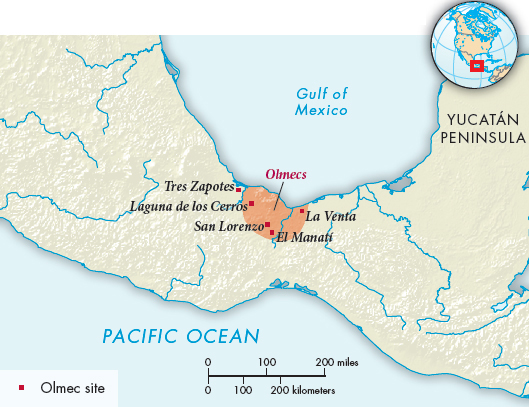A History of World Societies:
Printed Page 302
A History of World Societies Value
Edition: Printed Page 301
Olmec Agriculture, Technology, and Religion

The Olmecs were an early civilization that shaped the religion, trade practices, and technology of later civilizations in Mesoamerica. They flourished in the coastal lowlands of Mexico along a region stretching from Veracruz to the Yucatán from 1500 to 300 B.C.E. The Olmecs formed the first cities of Mesoamerica, and these cities served as centers of agriculture, trade, and religion (Map 11.1). Through long-
The Olmecs settled and farmed along rivers in coastal lowlands, where they cultivated maize, squash, beans, and other plants and supplemented their diet with wild game and fish. But they lacked many other resources. In particular, they carried stone for many miles for the construction of temples and for carving massive monuments, many in the shape of heads. Across far-
These ties between the Olmecs and other communities spread religious practices, creating a shared framework of beliefs among later civilizations. These practices included the construction of large pyramid temples, as well as acts that ranged from blood sacrifice, in which nobles ritually cut and bled themselves but did not die, to human sacrifice, in which the subject died. In addition to the manner of worship, archaeologists can trace the nature of the deities common in Mesoamerica. Olmec deities, like those of their successors, were combinations of gods and humans, included merged animal and human forms, and had both male and female identities. People practicing later religions based their gods on the fusion of human and spirit traits along the lines of the Olmec were-
The Olmecs also used a Long Count solar calendar — a calendar based on a 365-